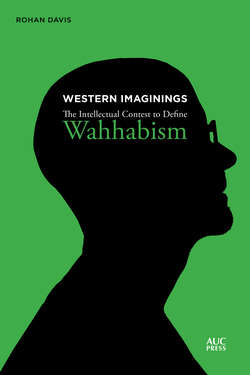Читать книгу Western Imaginings - Rohan Davis - Страница 6
ОглавлениеContents
Wahhabism: A Contested Category
1 Wahhabism as a Contested Category
Intellectuals, Imagined Geographies, and Imagined Communities: Wahhabism as Threat
Understanding Wahhabism through a Feminist Lens
Saudi School Textbooks and the Problem of Translation
Wahhabism Is Not So Bad After All
2 On Intellectuals, Prejudice, and Understanding the Social World
On the Collective Identity and Attachment of Intellectuals
Intellectuals and the Nation-State
3 Dialectics, Ideal Types, Fuzzy Categories, and Analyzing Language
Metaphors, Analogies, Similes, Neologisms, and the Cognitive Structuring of Violent Accounts
Critical Discourse Analysis: Language Is Made in and Makes the World
4 Spreading the Rule of Reason: Liberal Imaginings of Wahhabism
Understanding Liberalism: Many Freedoms?
Understanding Liberalism: Toward an Ideal Type
Wahhabism as Backward and an Obstacle to Progress
Wahhabism Is a Threat to the Ideal Secular Society
Individualism, Progress: The Key Themata and Generative Metaphors Influencing Liberal Thinking
Introducing the Neoconservatives
An Unwavering Support for Israel: Wahhabism and Saudi Arabia as Enemies of the Jewish State
Key Themata: The Holy Land and Welcoming the Savior
